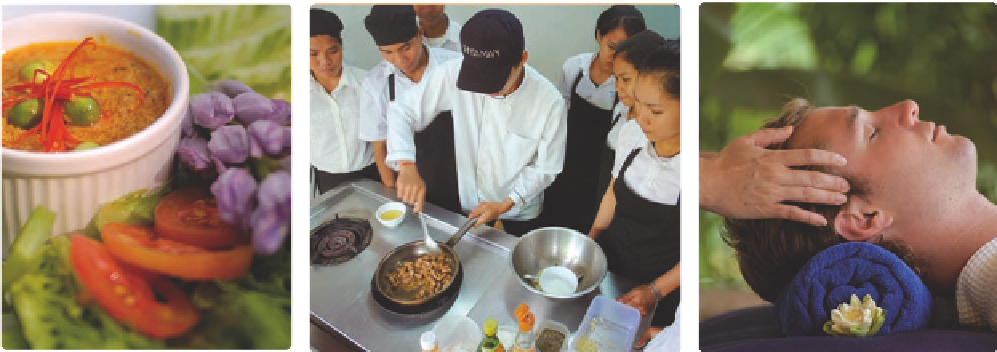Travel Reference
In-Depth Information
Need to know
The best time to see the ibises is
January to March. For booking and details of the
various birding tours offered by the Sam Veasna
Centre see
W
www.samveasna.org.
418 spot a giant iBis in
camBodia
With only a hundred breeding pairs left in
the world, the giant ibis is a twitcher's dream
sighting. But as the population is confined
largely to the wetlands of northern Cambodia,
the only realistic prospect of sighting this
elusive creature is on a birdwatching tour to
the Kulen Promtep Wildlife Sanctuary. At this
remote spot, the government and the Sam
Veasna Centre (an ecotourism and wildlife
conservation body) have established an
award-winning programme that aims to link
tourism, species preservation and community
development harmoniously.
Four-day tours from Siam Reap to Tmatboey,
a village within the wildlife sanctuary, are run
exclusively through the Centre. Once in the
sanctuary visitors are led by guides from the
village through wetlands and deciduous forest,
all the while on the lookout for the giant ibis
or the white-shouldered ibis, which only nests
here. A fee is paid to the village conservation
fund (which goes towards schools and building
fish ponds) only if you spy one of these two birds
while out walking with the guides. Rather than
limit the amount of funds going to conservation,
this provides a clear economic incentive to the
villagers - who also provide lodging and meals
- to protect their prized asset.
419 BEhind thE scEnEs at
angkor wat, camBodia
Situated in the heart of Siem Reap's French
Quarter, Shinta Mani hotel is just 9km from
Angkor Wat, giving you a good chance to get there
early enough to beat the crowds. With spacious
modern rooms, a spa offering massage, body scrubs
and aromatherapy, plus a swimming pool to cool
off in, it's an ideal place to return to after a long
day exploring the ruins. There are several boutique
hotels close to Angkor but what makes Shinta
Mani stand out is its Institute of Hospitality - a
programme that provides young adults with nine
months of culinary training, so that they can beat
the poverty trap by becoming chefs. Guests can
also contribute to various community projects
- such as building wells or buying bicycles - and
then visit the villages they have aided. It's a rare
chance to meet the people who live near one of the
world's great tourist attractions.
Need to know
For availability, rates, directions,
package offers and for details on funding students
or community development projects see
W
www.
shintamani.com;
T
+855 63 761 998.
The cookery school, the food
and the spa at Shinta Mani























Search WWH ::

Custom Search